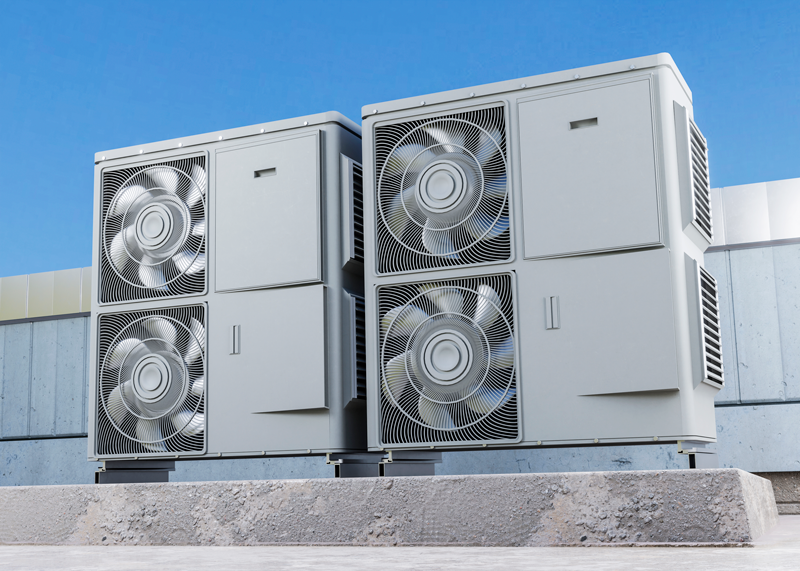Industrial cooling fans are widely used in various devices, from production lines to high-performance machinery, playing a crucial role in ensuring the normal operation and extending the lifespan of equipment. Proper usage and maintenance can significantly improve fan efficiency and ensure the long-term stability of equipment. Below are key considerations when using industrial cooling fans:

1. Usage and Maintenance
- Avoid Touching or PullingNever touch the fan blades while the fan is running, and avoid letting the power cables get tangled or pulled by the fan blades. This could damage the cables and interfere with the fan's operation, potentially harming the motor shaft.
- Prevent Foreign Objects from EnteringKeep the fan’s interior clean to prevent dust, oil, water droplets, insects, or other foreign materials from entering. These can increase the fan’s load, reduce cooling efficiency, and even cause fan failure or premature damage.
- Avoid Using in Hazardous EnvironmentsIndustrial fans should not be used in environments with flammable, corrosive gases, or other hazardous substances. This helps prevent safety accidents, such as explosions or fires, and ensures long-term safe operation of the fan and equipment.
- Proper StorageFans should be used within six months of purchase, avoiding long storage periods in high-humidity or unstable temperature environments, as these conditions may affect the fan’s performance or cause damage.
- Avoid Long Periods of InactivityNever leave the fan stationary for extended periods during operation. Prolonged inactivity can lead to motor overheating or damage, potentially causing internal component failure.
- Monitor for Resonance and VibrationEnsure the fan is securely installed to prevent excessive noise or instability caused by vibration or resonance. If necessary, install vibration-damping devices to reduce noise and extend the fan’s lifespan.
- Prevent DroppingAvoid dropping the fan during handling or installation. The balance of the fan blades and the ball bearings are fragile, and a fall can cause imbalance or bearing damage, affecting the fan's normal operation.
- Torque Control for ScrewsWhen installing the fan, adjust the screw torque according to specified values. Over-tightening can damage the fan’s housing or cause the fan to jam, affecting cooling efficiency and longevity.
2. Safety Protection
- Prevent Electric ShocksEnsure the fan’s power cables and plugs are well-insulated, waterproof, and fireproof. Always disconnect the power before operating or performing maintenance to avoid electrical shocks or fire hazards. Regularly inspect the power cable and plug insulation for safety.
- Avoid MisoperationOperators should not disassemble or modify critical fan components, such as the motor or control circuits, without authorization. Unauthorized handling can lead to equipment failure or safety risks, so it is essential to follow the user manual strictly.
- Maintain Safe Distance from Air OutletsFans generate high-speed airflow, and the strong wind and rotating parts can pose a hazard. Operators should maintain a safe distance from the fan’s air outlets to avoid injury.
- Ensure Sufficient VentilationEnsure there is ample ventilation space around the fan and avoid stacking flammable materials nearby or blocking airflow. Maintaining an unobstructed air passage enhances cooling performance and prevents equipment overheating.
3. Regular Inspection and Maintenance
- Cleaning and Dust RemovalRegularly clean the fan blades and motor parts to prevent dust or oil buildup, which can obstruct airflow. Use a clean brush or compressed air for cleaning, and avoid using wet cloths that could cause water to enter the motor and cause short-circuiting.
- Check Bearings and Motor ConditionPeriodically inspect the fan’s bearings and motor for abnormal sounds or vibrations. If issues are detected, lubricate or replace components promptly to avoid performance deterioration caused by prolonged wear.
- Ensure Secure Power ConnectionsCheck the power connections to ensure that wiring is secure and free from poor contacts or aging. Cables and plugs should meet industry standards to prevent electrical issues that may lead to fan failure.
- Temperature MonitoringIn industrial settings where efficient cooling is crucial, use temperature monitoring equipment to track the fan’s performance and temperature changes. If abnormal temperatures are detected, stop the fan and inspect the cooling system for necessary adjustments.
In industrial applications, cooling fans are not only the core component of the heat dissipation system but also crucial for ensuring equipment stability and safety. Proper usage, regular maintenance, and safety measures effectively extend the fan's lifespan, reduce equipment failure rates, and ensure efficient heat dissipation. Choosing high-quality fan products, coupled with regular maintenance and safety practices, enhances operational efficiency, reduces costs, and minimizes potential safety risks. Ruiapple Electric, as a professional cooling fan manufacturer, is committed to providing the best cooling solutions and ensuring the stable operation of every industrial device through superior products and comprehensive after-sales service.






